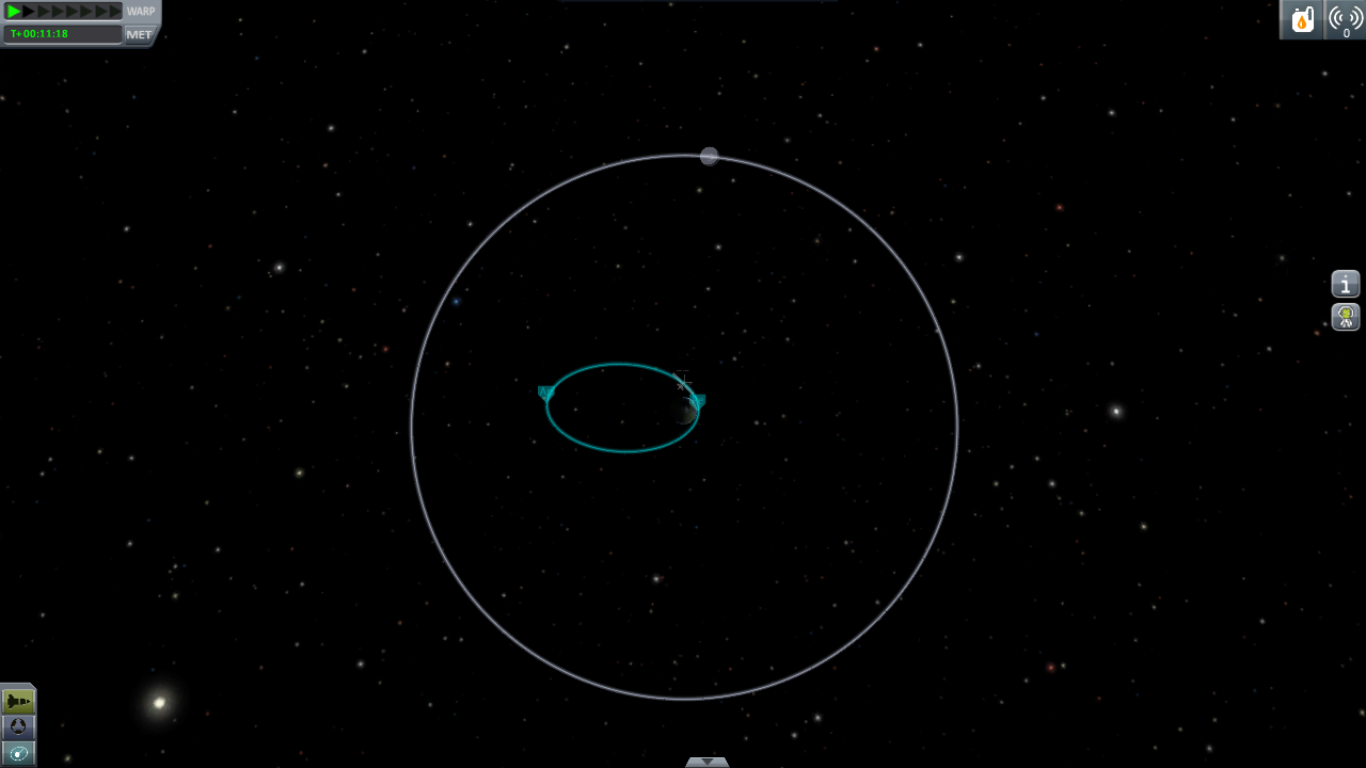For my (possibly? I think, technically) last blog post, I have been tasked with a recap and reflection; this is good, because I probably would not have given this project as much reflection as it deserved otherwise.
My goal, which I succeeded in (partially), was to reach the Mun in a simulation. I feel like, however, I did not actually do the best I could. Seeing Dani's animation earlier today made that abundantly clear, I think. Although rocket science is by no means easy, once you understand the concepts and have the formulas down it becomes a lot easier than one might expect.
If I wanted to, and put in more hours, I definitely could have made it further. Doing some quick research from the cheat sheet I talked about earlier today in my presentation, and my final product's chart I had made (below), I can see mathematically that to make it to Eeloo it requires 9590 m/s of delta-v (about), and that my rocket had 15957 m/s of delta-v.
 |
| My final rocket's charts and notes. I killed many astronauts making my final rocket, design phase included. |
Thinking about my presentation today, which I think went surprisingly well (did I go two minutes under?), I would like to further address the delta-v and specific impulse related stuff; first of all, if I had more time I would have explained it more in depth because I feel like it didn't make enough sense in my presentation. Researching these too concepts made up the majority of my research because they were so crucial.
Delta-v would be the rocket slowing down or speeding up in measurements. Since rockets in space have no friction and would technically go forever at the same speed in the same direction assuming there is no gravity, this is pretty much the most important number to know.
Specific impulse was luckily calculated by the simulation I used, but it is essentially the thrust produced over the weight of the propellants, and is used to measure efficiency. Usually rockets with low specific impulse have a high thrust, and vica versa, which made this trip difficult without ASPARAGUS STAGING, which ultimately saved this project. I explained it in blog post 4, I think?
Moving forward, just like Jason Smith is doing with his language, I do think I will continue this in my free time. I don't think I'll do as much as I'm sure he will be, but I also think that this was something fun and interesting, and now that I know for sure that this rocket can also make it to Eeloo (and mathematically speaking Moho), not to mention the other moon around Kerbin, Minmus, I don't see why I shouldn't practice more complex orbital maneuvers like the Hohmann Transferral Orbit and learn about launch windows.
Before I link to my comments for this post, did you know that the videos I've been recording are in 720p? That's a lot higher than I thought.
Additionally, if I end up going to other places I will post videos and the like on this blog simply because of how much fun I had doing it; especially if I set the concrete goal of having enough to write 250 words on this blog each cycle, that should allow me to actually continue with something I had I found very interesting. (I don't actually know if I'll follow through with this though!)
For this week I blogposted on the following people's blogs:
Jason Shu's (Stop-Motion Animation, Blog Post 4)
Nathan Leung's (Web App Development, Vlog)
Sam Klugherz's (Longboarding, Blog Post 4)


























